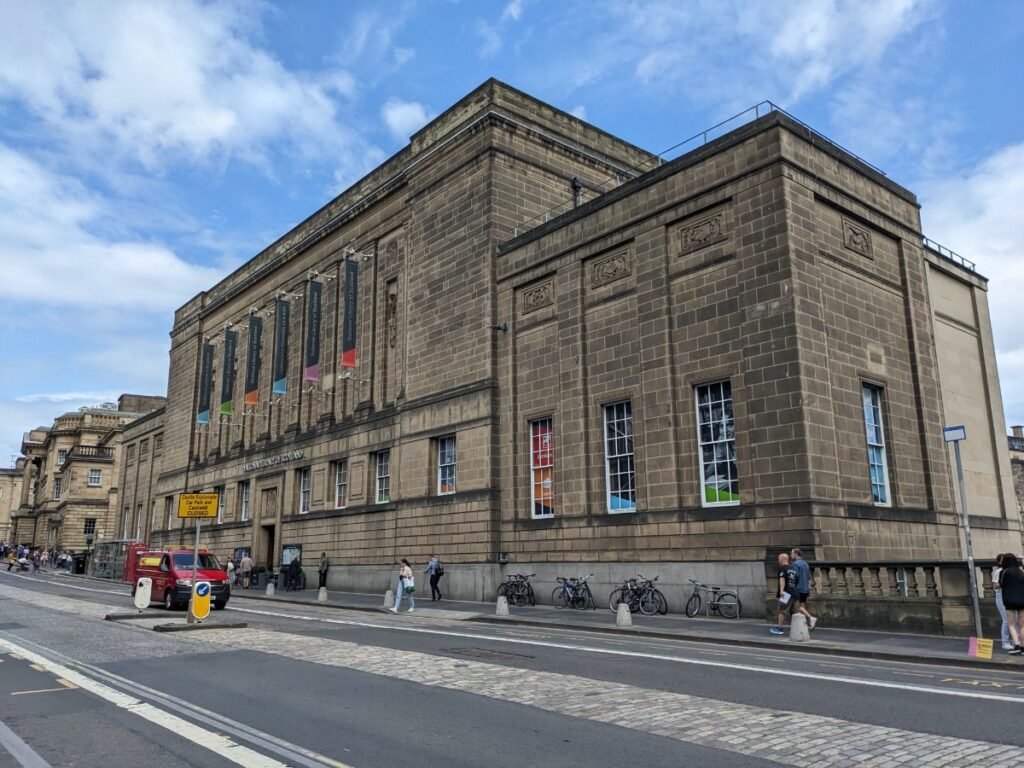27th October 1952
National Library of Scotland architect dies
Reginald Fairlie was born in Fife in 1883 and became a prolific architect of monumental buildings and memorials, almost exclusively in Scotland. These include the cloister at Kelso Abbey and the restoration of Hutton Castle. However, one notable work took much longer than most others to complete: the National Library of Scotland.

Royal Scottish Academy
Upon being elected an associate of the Royal Scottish Academy, the Dundee Evening Telegraph of 22 March 1923 ran a brief biography, explaining that after his initial training he had “studied in London and Italy [but] has been in practice in Edinburgh since 1909… he has designed about fifteen churches in Scotland. He also acted as architect in connection with the restoration of the Norman Church at Leuchars. The war memorials designed by Mr Fairlie include those at Blairgowrie, Moffat, and at the Royal and Ancient Clubhouse at St Andrews.”
That Fairlie could already claim a considerable body of work in Scotland as his own no doubt made him a suitable choice to work on the design of the country’s new National Library, but it was by no means a certainty. The Scotsman, of 23 January 1934, whose London correspondent said he was of the understanding that Fairlie was the chosen man, explained that “the usual procedure [is] to make such an announcement in reply to a question in the House of Commons”.
Fairlie invited to design Library
The correspondent was correct and, on 17 May, Sir Samuel Chapman, the Scottish Unionist Party MP for Perthshire, asked William Ormsby-Core, the first commissioner for works, “if he can now make any further statement with reference to the proposed building for the National Library of Scotland.”
Ormsby-Gore replied that, “after consideration of the recommendation of the Selection Committee appointed for the purpose, I have invited Mr Reginald Fairlie to act as architect for the building, and I am glad to say that Mr Fairlie has intimated his acceptance.”
Work on the building began four years later, but it was interrupted by the Second World War and not completed until 1956. Unfortunately, though, Fairlie did not live long enough to see it open, as he died on 27 October 1952 and was buried at St Andrews’ Eastern Cemetery.
Library’s royal opening
Queen Elizabeth II opened the library on 4 July 1956 and, the following day, the Belfast News-Letter reported that “the Queen said, in declaring the library open, that it was the oldest of ‘our national libraries’ and was founded nearly 80 years before that of the British Museum itself… the Queen and Duke [of Edinburgh] were told that the library had approximately 1,500,000 volumes and the shelves totalled a length of about 30 miles.”
The National Library of Scotland, on George IV Bridge, has grown considerably over the years. It is now home to more than 14 million items and Fairlie’s building is now Category A listed.
Other events that occured in October
FREE Scotland history newsletter
Don't miss our weekly update on Scotland's fascinating history. We promise never to sell your data to anyone else, and there's a super-easy unsubscribe link on the bottom of each email so you can leave whenever you want.
